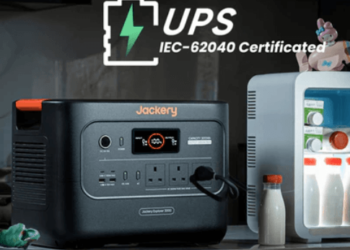Every business that has ever launched a cold calling campaign has faced the same question: How many calls should we make in a day? It’s a simple question on the surface. But underneath it lies a much bigger, more consequential one: What actually defines a successful call?
For years, outreach performance has been measured by volume—calls per hour, talk time per shift, contacts logged by the end of day. More dials equaled more chances. More chances meant more results. At least, that was the logic.
But a growing body of insight—backed by campaign outcomes and customer behavior—suggests otherwise.
The future of outreach doesn’t belong to the teams who dial the fastest. It belongs to the ones who communicate the clearest.
The Fallacy of the Dial Counter
Cold calling platforms today make it easy to track numbers. You can log every interaction, automate follow-ups, and analyze peak calling hours. But none of these metrics answer the more essential question: Did the call actually connect?
You can hit 200 dials in a day and still walk away with no appointments, no meaningful responses, and no value created. That’s not performance—it’s noise.
A meaningful conversation—a real, two-way exchange where context is shared and curiosity is sparked—requires more than just reaching someone. It requires communication skills, emotional tone, and conversational flow.
If your team is rewarded for call counts rather than connection quality, you might be scaling inefficiency instead of effectiveness.
Defining a High-Quality Call
What makes a cold call “high quality”?
It’s not about whether the lead said yes. It’s about whether they stayed engaged long enough to evaluate the offer.
A high-quality call includes:
- A clear, respectful introduction
- Purpose that’s stated early and transparently
- A conversational rhythm—not a one-sided pitch
- Listening, with room for the lead to respond
- Tone-matching and question framing
- A logical, respectful close, whether or not an appointment is set
These elements can’t be mass-produced. They require a communicator who’s trained, focused, and present. That level of presence doesn’t scale through volume. It scales through preparation and execution.
Rethinking Staffing Metrics
Many companies that engage in cold outreach hire based on the idea of maximizing volume. More seats, more dials. But this often results in high turnover, inconsistent performance, and ultimately—wasted leads.
This is where many are beginning to rethink their hiring approach altogether.
Rather than focus solely on geographic proximity or resume keywords, they are seeking out affordable foreign professionals with strong phone etiquette, neutral tones, and adaptable communication skills.
Why? Because quality trumps familiarity.
A remote caller with strong listening instincts and real-time conversation awareness often produces better results than a local hire reading from a script and rushing to meet a dial quota.
The Cost of Bad Calls
Every call your business makes has a cost—data acquisition, staff time, dialer software, opportunity loss. But there’s also a reputational cost.
If a prospect is rushed, misheard, or pitched robotically, that negative experience doesn’t just affect that one call. It taints your brand’s reputation for future interactions.
Even worse, if that lead is in your CRM and later receives a follow-up, their impression is already poisoned. You don’t get a second chance to make that first call feel human.
This is why fewer better calls almost always outperform high volumes of mediocre ones.
The Case for Smaller, Smarter Teams
Companies are now scaling smarter, not louder. Instead of hiring dozens of outbound reps to blanket-call a market, they’re hiring small, specialized teams who make fewer calls—each one of them intentional.
These teams often include international professionals sourced for their phone presence, their listening skill, and their cultural adaptability. These aren’t generalists—they’re voice-first communicators.
And because they come from a wider labor market, they’re often more cost-efficient. That’s the edge of using affordable foreign talent: you don’t compromise quality—you reallocate the budget to optimize for it.
No Accent Callers, as one example, reflects this strategy. They represent a shift in the cold outreach space: away from mass-dialing and toward conversational relevance.
Measuring What Matters
If volume isn’t the best metric, what is?
Smart outreach teams now focus on:
- Conversation rate – How many of your calls lead to real, two-way discussions?
- Appointment conversion – Of those conversations, how many result in a next step?
- Lead feedback – Are leads receptive, indifferent, or resistant? What tone are they setting?
- Voicemail impact – When a voicemail is left, does it prompt a callback?
- Script flexibility – Are reps allowed to adapt based on the moment, or are they locked into phrasing that ignores context?
The takeaway: If you measure success by the depth of your calls, not the count, your entire strategy shifts.
Building for the Modern Prospect
Today’s prospects are more aware than ever. They know when they’re being read to. They recognize automated intros. They disengage quickly when a call feels impersonal.
So what actually catches their attention?
- A moment of silence before speaking (not an auto-dialer delay)
- A conversational, calm delivery
- An agent who responds, not just talks
- Language that matches local idioms and pacing
You don’t get these advantages by hiring fast or dialing fast. You get them by investing in training, support, and performance standards that prioritize the listener’s experience.
Why Fewer Calls Can Mean More Sales
The highest-converting outreach campaigns aren’t necessarily those that reach the most people. They’re the ones that make the right people feel something when the phone rings.
That’s the difference between outreach and connection. Between presence and performance.
Companies that retrain their teams around quality not only see better conversion—they see better morale, lower attrition, and clearer data about what’s working.
When you stop measuring noise, you can finally start amplifying what matters.
Final Thought: Lead With the Voice That Listens
In the race to scale, it’s tempting to chase numbers. But your customers don’t care about your dials per day. They care about how they were treated. How well you listened. Whether the person on the other end of the call felt like they were speaking with them, not at them.
The businesses winning in voice-based outreach are turning down the volume and turning up the connection.
And whether your team is local, hybrid, or built around affordable foreign professionals, the lesson is the same: stop counting dials. Start counting conversations.











































































